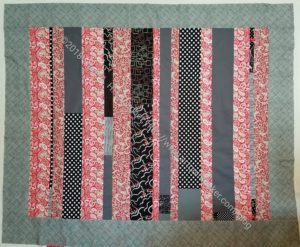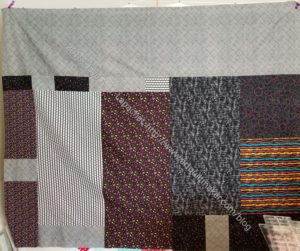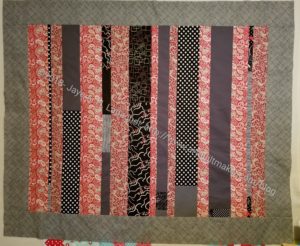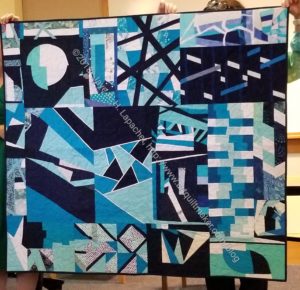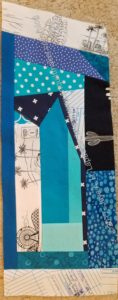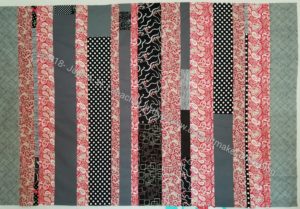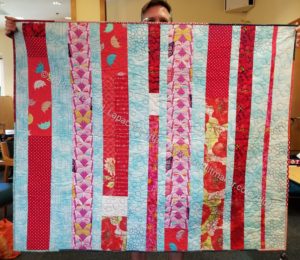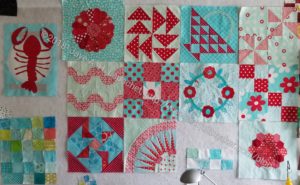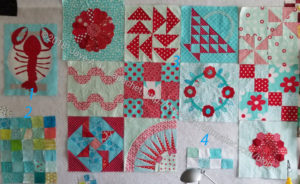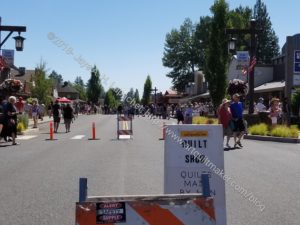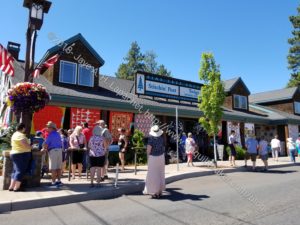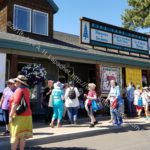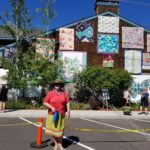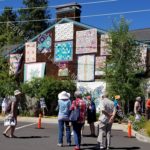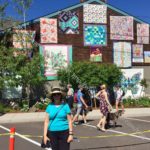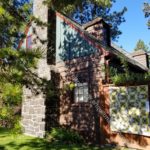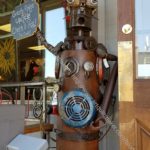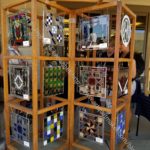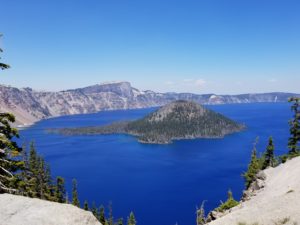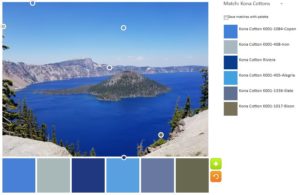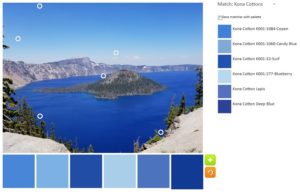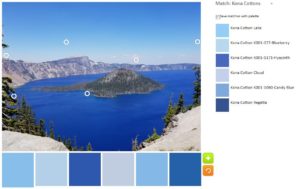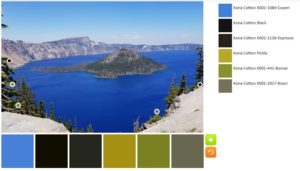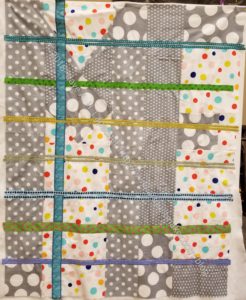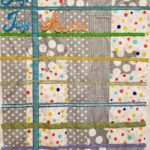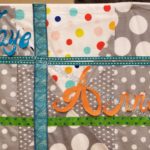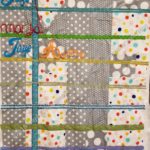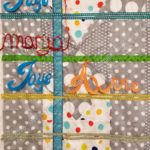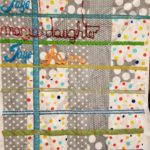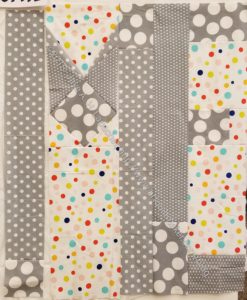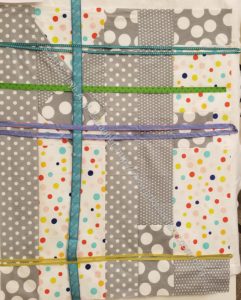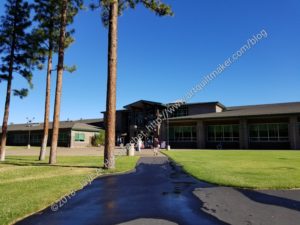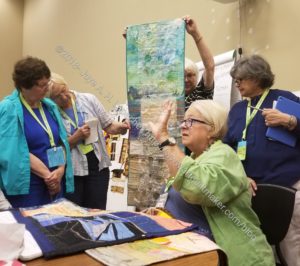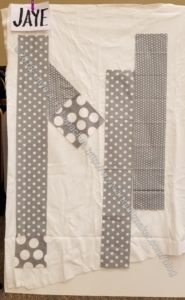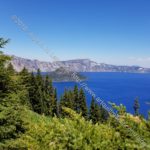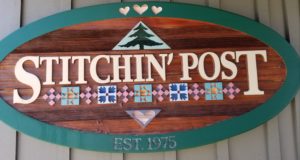 Art Quilt Maps: Capture a Sense of Place with Fiber Collage-A Visual Guide by Valerie S Goodwin
Art Quilt Maps: Capture a Sense of Place with Fiber Collage-A Visual Guide by Valerie S Goodwin
This is a 2013 book. I have had it for awhile, but put it in my bag a couple of weeks ago. I have been carrying it around with the intention of reading it since then, which I finally did, then began writing the review last week. I was inspired to put this book on my list after seeing my friend, Nancy‘s map quilts.
I am often skeptical of books that purport to teach art quiltmaking and improv techniques. While there are certainly things we can learn from books, I feel that the essence of learning these techniques is very hands on.
Thus, I was pleased to see the way the techniques were presented. This is not a pattern book. There are no projects included. Each technique is presented in a way that helps the reader learn a skill that will help them make their own map. From the instructions you can make your own map quilt, but your quilt will not look like Ms. Goodwin’s project. I really like the layout of this book and applaud C&T for thinking outside their normal book template.
The book begins with an introduction (pg.6-7) talking about her grandmother, learning to sew and the spark that started Goodwin on the quilt journey. I always love it when authors tell readers where they came from and how they learned to sew.
The next section, Mapping Out Ways of Working (pg.8-18) is really an extension of the introduction. This part goes into depth about what came after the initial spark. Valerie Goodwin talks about maps, why maps and other imagery captures her attention. One of the things that inspires me is that she has chosen one type of image and is working through possibility after possibility. I think this is a great way to grow as an artist as long as the type of image, in this case the map, chosen is not too limiting in scope.
This book is lush with images. There are drawings, quilts, maps, step-outs and other types of images on every page. Not only does this give the reader an idea of the work Ms. Goodwin has done, but it also shows the variety of maps and elements that can provide scope for inspiration.
This section talks a lot about Ms. Goodwin’s process, which I love. She writes about starting with small sketches (pg.16) and how the sketches play out in the actual work (pg.15). We also get some history of maps, including a brief mention of the Nolli maps (pg.17).
I also found that this section is designed to teach how to look at things and get inspiration. I think inspiration: gathering it, putting pieces together and making something is one of the, if the, most important part of art quiltmaking, but quiltmaking in general.
Yes, there is a section on materials (pg.19-22). Fortunately, the author doesn’t go into detail about basic sewing supplies. She takes up the space with materials and supplies required for art quiltmaking, including transfer and stencil supplies, fabrics and stabilizers, painting and stamping supplies. The fabrics listed are not just the usual quilting cottons. They include crinoline, silk organza, and drapery or kimono scraps.
After the supplies, we get down to business with the background layer. In the introduction to this part, Goodwin reminds us “as you work through the exercises and examples, remember that you are building a framework to create your own unique map art ” (pg.23). Following on to this advice comes a section about different layers – opaque layer (pg.24), painted layer (pg.25) and translucent layer, etc. Each of the projects is a practice piece, which the author emphasizes. As I warned, she tells the reader generally what to do, but not exactly what to do. You will not end up an exact replica of one of the author’s quilts, but you will end up with a satisfactory layer. In each exercise, there is plenty of information to be successful. There are examples of other background layers as well.
The background chapter is followed by the lines and shapes chapter (pg.28-38) – creating elements at the heart of the map. Goodwin gives examples of different kinds of lines and shapes useful for this technique (pg.30). You will be familiar with them if you have ever looked at a paper map. This is the chapter where hand and machine stitching, stamping, applique’, stenciling and other fun techniques enter the picture. I like the gallery at the end of the chapter (pg.36-38). It is a feast for the eyes and full of inspiration.
A chapter on Map haiku/visual poetry starts on page 39. In this chapter Goodwin suggests adding haiku or poetry to the piece (pg. 39). She talks about what haiku is (pg. 40), materials required and the design process (pg. 41).
Throughout the book, Goodwin reiterates lessons and techniques. While working with poetry, she writes “After you have design sketches, it’s time to start the background. Refer back to Background Music. The first or background layer is the base layer or the Earth’s surface. The subsequent layers make up the details of the map, such as roads, paths, landscaped areas, and buildings” (pg. 42). This smart because the process is reiterated over and over in context. Repetition is an excellent strategy for teaching.
The poetry chapter had more step-by-step directions, though not the kind where she tells the maker to use a certain fabric or color. She also follows the directions she gave earlier in Background Music. It is easy to move back and forth between sections to check details. I used some post-it flags to mark pages to which Goodwin often referred.
The haiku chapter also has a gallery (pg.46-48), which is such a great addition to the chapter. The pieces in the gallery illustrate the point of the chapter and provide another feast for the eyes.
Fiber Art Travel Maps starts on page 49 and is described as a reminder of a trip or a wish to visit a certain place. In this chapter, the reader follows along with making a map quilt (pg.52-56). We see many images of steps in the process and get an idea of how the process looks in detail.
The important point of the chapter is the author’s reminder that “It is important to think about what you want to express in a travel map” (pg.50), which I think is true for all art pieces. The artist doesn’t have to send a message to the viewer and can explore, for example, the interplay of colors. Be clear on what you, as an artist, want to express. Being clear about what you want to express makes a better design.
The chapter that begins on page 57 and is about mapping personal memories. The images show Valerie Goodwin’s memories, but also how she relates them to each other. Additionally, she discusses preparing them to be part of her artwork (pg.58-59). The focus of the chapter is design (hooray!) not technique (pg.58).
Valerie starts with words she and her sisters associate with the place. I like this brainstorming technique as I always formulate images in my head as I see words on a page and as I brainstorm the images start to form a cohesive shape.
This is a very personal process and the reader must extrapolate from the author’s process to create his/her own process. The process of collecting is followed by design sketches (pg.60), prep work (pg.62) and creating the background layer (pg.63). The map piece (pg.64) is discussed as is finishing (pg.65-66), but, again, not in a step by step or dogmatic manner.
The book finishes with two extensive galleries, one by the author (pg.67-81) and another by her students (pg.82-93). Both show the extensive possibilities provided by the techniques in this book. The work is extensive, varied and gorgeous. Valerie Goodwin has a definite Autumn color palette preference. While there are many black and white pieces in the student section, the works in color are very vibrant.
Buying this book, Art Quilt Maps, would be a good way to get a start in art quiltmaking.


